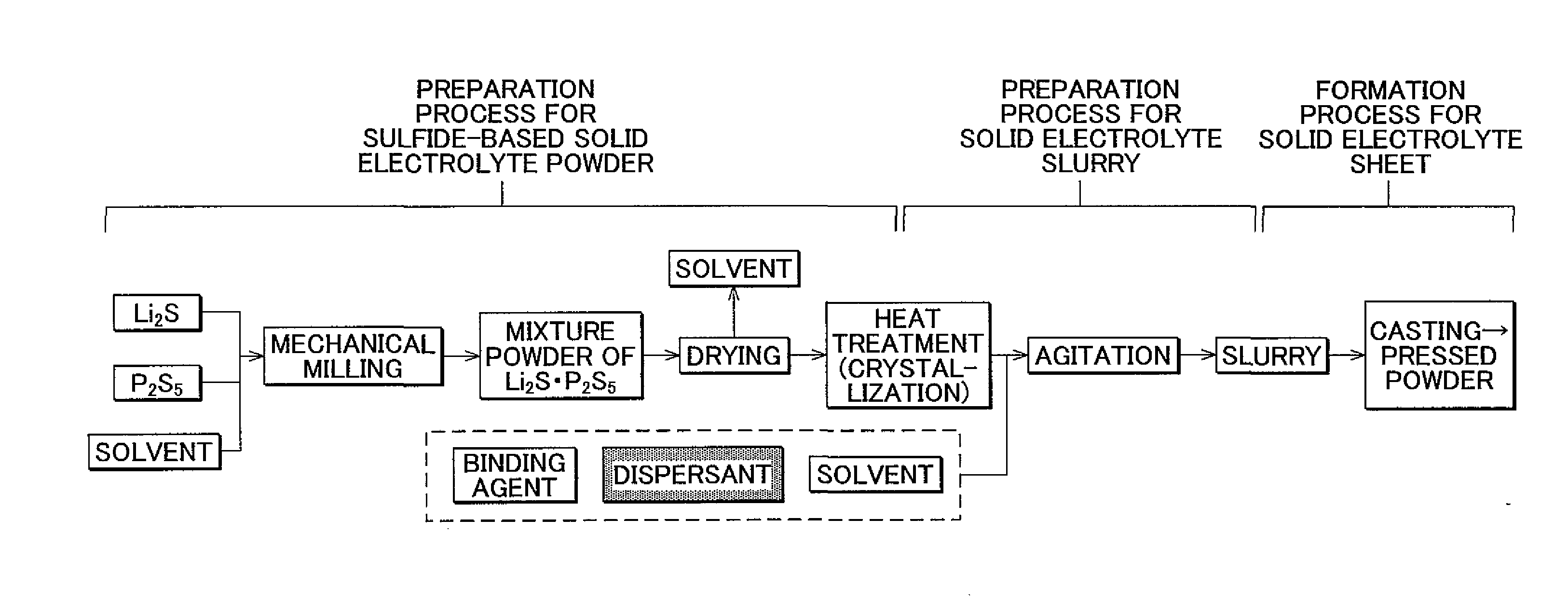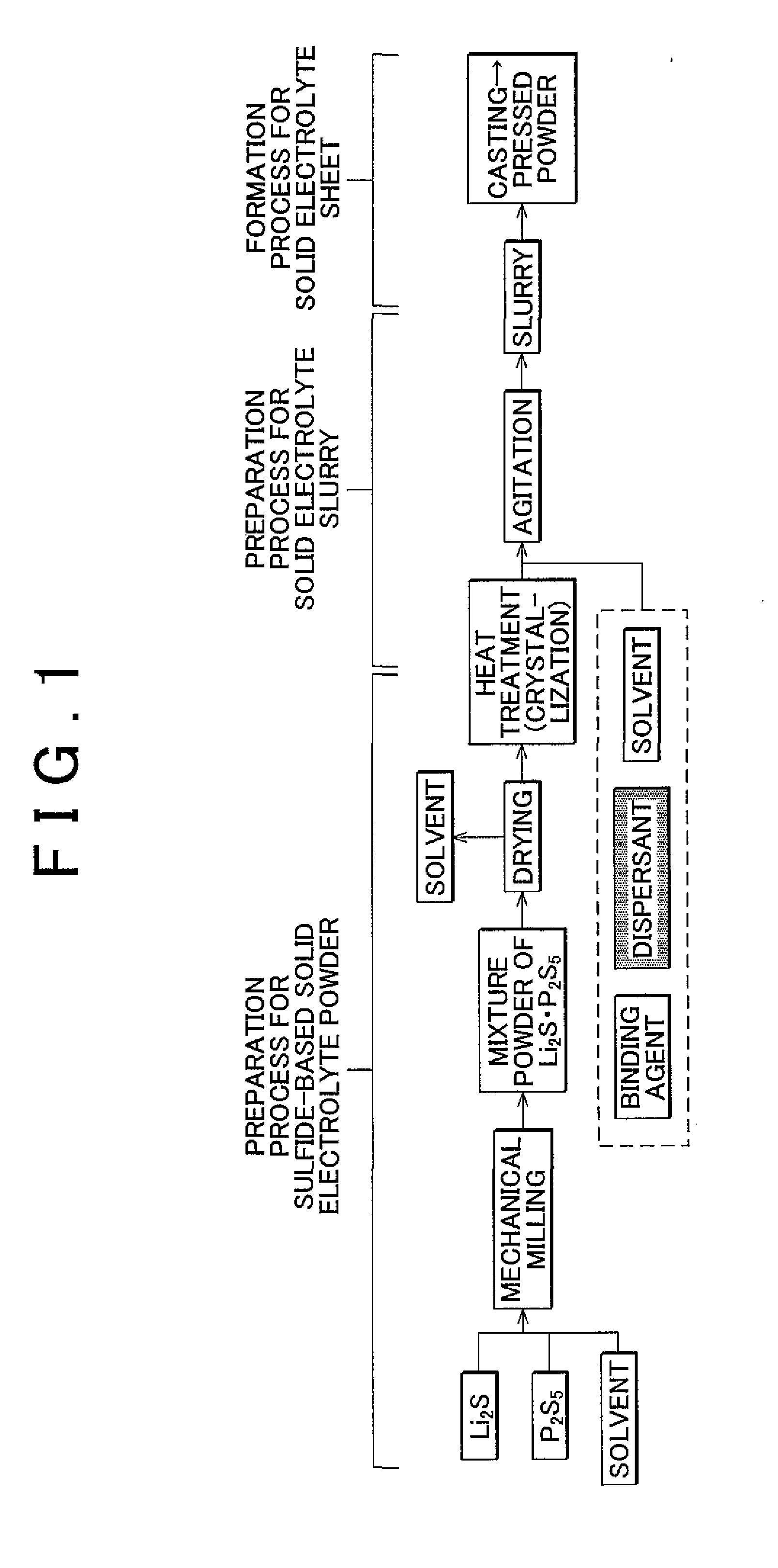Manufacturing method for solid electrolyte sheet
a manufacturing method and solid electrolyte technology, applied in the direction of electrolytes, cell components, electrochemical generators, etc., can solve the problems of difficult continuous production, poor flexibility and machinability of solid electrolyte sheets, and considerable difficulty in molding a large area thin film, etc., to achieve high lithium ion conductivity
- Summary
- Abstract
- Description
- Claims
- Application Information
AI Technical Summary
Benefits of technology
Problems solved by technology
Method used
Image
Examples
first example
[0043]5.60 g of lithium sulfide (purity 99.9%) and 2.40 g of phosphorus pentasulfide (purity 99%, produced by Aldrich) were premixed in an agate mortar, then 12 g of n-heptane (produced by Nacalai Tesque) was added as a solvent, and then the materials were mixed at a rotational speed of 300 rpm for 15 hours by a planetary ball mill (50 ml case made of zirconia, ball diameter of 2 mm, produced by Fritsch Company). The obtained mixture (electrolyte) was simply dried on a Kiriyama funnel filter paper, filled into a pressure case made of SUS, and heated to 290° C. by a mantle heater for 2 hours. By so doing, the solvent was removed and the sulfide-based solid electrolyte powder was crystallized to obtain coarse electrolyte powder. The obtained electrolyte powder was lightly crushed to be uniform in a mortar, 7.00 g of n-heptane was added to the 2.67 g of electrolyte, then 0.30 g (0.35 ml) of tert-dodecyl mercaptan (produced by Tokyo Chemical Industry Co., Ltd) was further added to the e...
second example
[0044]A second example differs from the first example in that 7.00 g (7.21 ml) of tert-dodecyl mercaptan (produced by Tokyo Chemical Industry Co., Ltd) was used as the solvent used at the time of slurry preparation, and then the settling velocity of the electrolyte slurry was measured. In addition, as in the case of the first example, the compacted electrolyte membrane was prepared, and the lithium ion conductivity was measured. The results are shown in Table 1.
third example
[0045]0.30 g (0.32 ml) of cyclohexanethiol (produced by Tokyo Chemical Industry Co., Ltd) was used as the sulfur-containing compound (dispersant), and the settling velocity of the electrolyte slurry was measured under the same condition as the first example except that the drying temperature during deposition was set at 150° C. In addition, as in the case of the first example, the compacted electrolyte membrane was prepared, and the lithium ion conductivity was measured. The results are shown in Table 1.
PUM
| Property | Measurement | Unit |
|---|---|---|
| Percent by mass | aaaaa | aaaaa |
| Percent by mass | aaaaa | aaaaa |
| Particle diameter | aaaaa | aaaaa |
Abstract
Description
Claims
Application Information
 Login to View More
Login to View More - R&D
- Intellectual Property
- Life Sciences
- Materials
- Tech Scout
- Unparalleled Data Quality
- Higher Quality Content
- 60% Fewer Hallucinations
Browse by: Latest US Patents, China's latest patents, Technical Efficacy Thesaurus, Application Domain, Technology Topic, Popular Technical Reports.
© 2025 PatSnap. All rights reserved.Legal|Privacy policy|Modern Slavery Act Transparency Statement|Sitemap|About US| Contact US: help@patsnap.com


